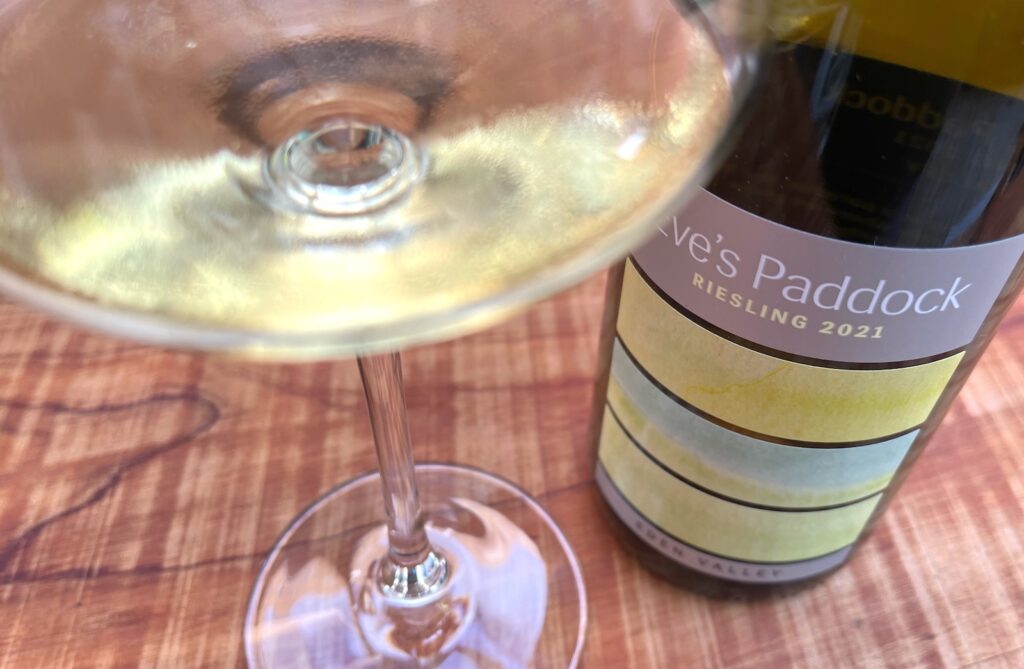Starting with a white that wouldn’t be on most people’s table this weekend – Château Le Coin Sauvignon Gris 2020. A single varietal white wine, from Bordeaux, in France, sealed under cork. A translucent, very pale gold colour. Lime, grapefruit, white pepper, red apple, green capsicum and fennel on the nose. Very dry, with a bracing, saline acidity, quite tight and linear into the palate. As the wine unwinds, there are richer, smoky and toasted spice notes that contrast nicely with the crisp opening. This paired very well with steamed mussels and a smoked fish paté as an aperitif – handling the stronger flavours well, and was served well chilled. A good persistence to the finish – clean and pithy. 89pts


Field of Stones Sauvignon Blanc 2022 is made by Forrest in Marlborough. The flavours here are easy for a New Zealand audience to understand, as they are in that familiar range of lemon, apple, grapefruit, blackcurrant and passionfruit flavours. It has an easy-going body, with nothing out of place, but does have a stony minerality lurking in the middle, and a bounce of acidity that steers you through that crisp fruit. 88pts
Eve’s Paddock Riesling 2021 from Eden Valley, South Australia – a great source of Riesling, often piercingly dry and tangy. This is a translucent pale green in the glass, with a tight, restrained nose of lemongrass, green apple, lime leaf, dried pineapple and orange blossom. The palate is bone dry, and does have that brisk, briney acidity, but look out for some spice following through from the nose, and plenty of zesty fruit. Bursts with energy and zing, bristling through the palate, to a crunchy, mouth-watering finish. 88pts


McPherson Aquarius Marsanne Viognier, a blend of Southern Rhone varietals. from the Goulburn Valley in Central Victoria. A super-cool, hip label! A light golden colour in the glass, with a perfume led by floral notes of honeysuckle and flowering citrus. More citrus, ginger, chestnut, peach and red apple follow on the nose. The Viognier leans towards the pretty, sweeter side, with the Marsanne adding more structure, depth and complexity. Good minerality and acidity, with some fruit tannin adding a phenolic bite, but the texture envelops the palate towards the end, in a swathe of generous lushness. 91pts
The first red wine is from one of my favourite regions for red wines – Richard Hamilton Shiraz 2020 is from McLaren Vale. I tasted their ‘Lot 148 Merlot’ recently – it featured on the Australian side of our Single Varietal Reds Top 10 Tasting – www.winefolio.co.nz/?p=6756. Blackcurrant, raspberry, black pepper, cedar and chocolate on the nose. A good tang of crunchy, ripe fruit powers the palate which has some powerful weight – quite burly and robust. Firm, fuzzy tannin, and a soft texture. A straightforward example of a Shiraz – this should be a crowd-pleaser. 88pts


José Luis Oilveira da Silva ‘Amoras de Portugal’ 2020 is from the area south of capital Lisbon. Using local varietals – Castelão, Camarate, Touriga Nacional and Alicante Bouschet. A definite warm-climate wine, laden with jammy, juicy flavours of kirsch, plum, cherry and cassis. Oak frames the ruby fruit with vanilla and toasty cedar, and the tannins are supple and savoury. A touch on the sweet side, but unctuous and ripely delicious because of that. A great alternative to a big Aussie red if you’re looking to explore. 90pts
Jeanneret Cabernet Shiraz 2019 is from Clare Valley and has an intriguing information-led label that looks like something from a spreadsheet, detailing all the component facts and figures. A dense inky garnet in the glass, with a bold, juicy perfume. Blackcurrant dominates but a big dose of ripe boysenberry and damson plum comes in as well. Black pepper, graphite and toasted middle-eastern spices aplenty. The tannin is fine, quite supple, and the acidity is also moderate, but the full bodied palate remains quite firm. A smoother edge comes from the texture – pillowy and mouth-filling. A great, charry, savoury finish. Good example of a big, bold Aussie red. 92pts





